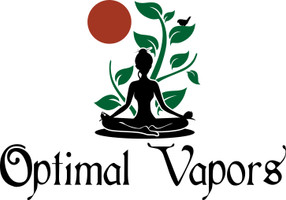Cannabis concentrates are turning into an increasingly well-known consumption method, however, their intensity and new structure can be a bit discouraging at the start. Numerous consumers will adhere to what they know and never feel constrained to digress from a jar of sweet-smelling flowers. In any case, cannabis concentrates and extracts have many advantages to bring to the table you may not understand—for instance, concentrates can offer cleaner, smoother, and less odiferous hits.
These five facts might be sufficient to kick the cannabis curious off
1. Concentrates have many names.
Although the variety of strains accessible can blow one's mind, even amateurs have a very good idea of what they're getting with the flower, paying little heed to its name. "Concentrates" is an umbrella term that alludes to a wide range of cannabis extracts and their monikers – and that is the place where things can get confusing. Imagine you're standing at the glass counter of a dispensary. Inside you see the following things: shatter, rosin, BHO, CO2, wax, crumble, honey oil, dabs, hash, tinctures, and capsules. Try not to let the breadth of alternatives drive you away–large numbers of these are different names for the same thing. Here are some quick tips for narrowing your search down:
Shatter, wax, crumble, sugar, honeycomb, sap, and oil often allude to a concentrate's texture. While some people incline an extract's consistency, what's imperative to many individuals is the solvent used and how viable that extract is with their favored consumption method. Likewise, be aware of potency and comprehend that a high THC content doesn't generally equate to the best experience. Most concentrates are extricated using CO2, hydrocarbons, water, liquor, and heat. Solventless concentrates made utilizing water (e.g., hash) or heat (e.g., rosin) are phenomenal choices for those wary of how consuming solvents may affect them.
2. Concentrates are more Potent.
The main differentiation to make between cannabis flowers and concentrates is potency. While bud potency will in general reach between 10-25% THC, a concentrate regularly falls between 50-80% however some excellent concentrates can even push past 90%. Those numbers might be sufficient to scare off any under-prepared customers, and all things considered: dosing gets trickier as potency increases.
A mildly or non-inebriating CBD-rich concentrate would be a decent decision for beginners (truth be told, not all concentrates get you high). Hash and tinctures likewise will in general have lower THC contents than different sorts of concentrates, so you should seriously think about guiding toward those before graduating to the more potent oils. Simply make sure to always begin with a low dose and move gradually up in case you're new to concentrates having a low tolerance.
3. Concentrates can be consumed in various ways.
With bud, you can smoke it, and roll it, yet there's very little else you can do with it. Concentrates offer more alternatives.
Dabbing—the cycle by which you apply a concentrate to a hot nail and breathe in through a glass piece–is quickly on the ascent among cannabis veterans. Dabbing is a simple method to get a potent dose of cannabinoids although it is a less accessible option for new users.
Ingestible oils act like edibles in that they take effect gradually and last any longer because of how they're metabolized. These oils (or any concentrate, truly) can be high in THC, CBD, or both. So in case, you're keen on smoke-free methods – particularly for treating medical side effects and conditions–these capsules might be worth looking into.
Tinctures are a sublingual concentrate, which means they're dropped under the tongue and enter the circulation system. They act quicker than edibles and ingestible oils, however, they're generally less potent.
Hash and oils might be also consumed utilizing some of the similar consumption methods as flowers. Motivated enthusiasts can even roll their bud-loaded joints with hash and oils.
4. Plant matter also comes from concentrates.
Here's one advantage to concentrates perhaps you've won't ever consider: extraction processes strip out the plant material and isolate the compounds you need like THC and CBD (and possibly a few things you don't need, on account of pesticides, toxins, and remaining solvents; ensure the products you consume are tested).
At the point when you smoke flowers, you're also smoking the plant material that leaves your glass dark with tar. That can negatively affect your lungs. However, you might have seen that when you dab oils, the glass and water stay clean for much longer. Vaporizers heat cannabis below the temperature of combustion, yet hot enough to extract beneficial compounds. This delivery method is ideal for health-conscious people.
5. Flowers might have more flavor—however not always.
If the flavor is something you care about, this point is for you: a few concentrates will lose their smells and flavors in the extraction cycle. Terpenes are the volatile, fragrant oils emitted by the cannabis plant, and they give the flowers their scents from the sweet, fruity, and floral to the earthy, piney, and musky. Being so sensitive to heat, it may very well be hard to preserve terpenes in numerous extraction processes.
Therefore, numerous producers have started once again introducing these sweet-smelling compounds a while later which can bring about items much more delightful than the flower they came from. A few extracts like live resin often hold amazing flavor profiles without a need to reintroduce terpenes, and numerous consumers will tell you that this refined form tastes preferable and cleaner over the flower it was gotten from.

